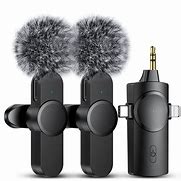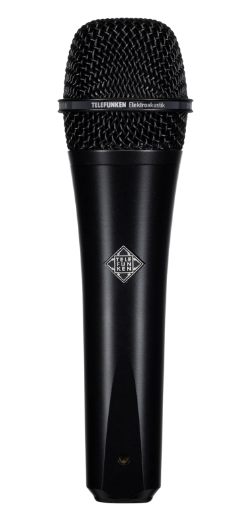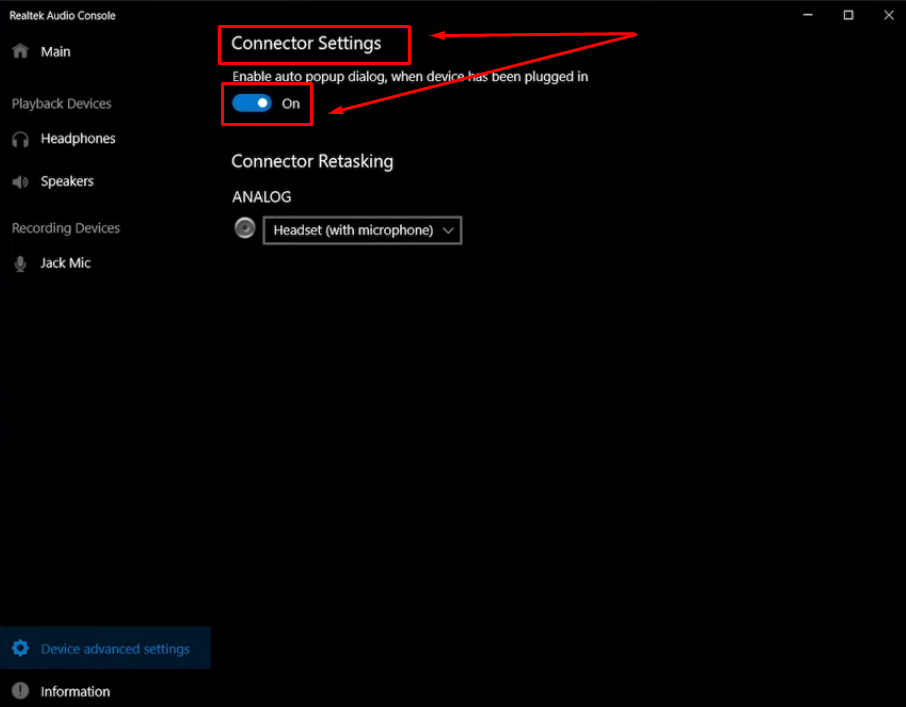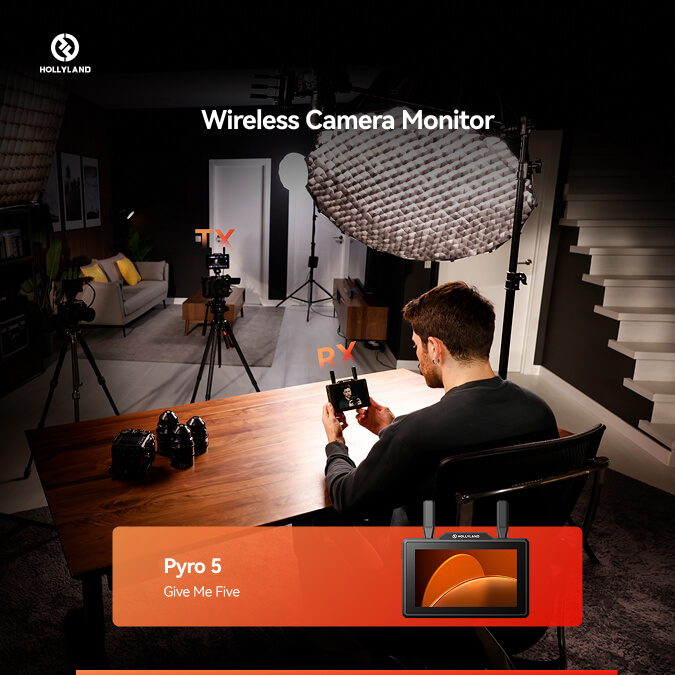Are you looking to elevate your audio recording quality to professional levels? Whether you’re a podcaster, musician, or streamer, the right audio interface can make all the difference. It’s the essential bridge between your microphone and computer, acting as an external sound card to ensure crystal-clear sound capture. But with so many options out there, how do you choose the one that’s right for you? In our listicle, we’ve sifted through the market to bring you the best audio interfaces for microphones, making it simple to find the perfect match for your audio ambitions. Let’s dive in and discover your sound’s next best friend!
When selecting the best audio interface for a microphone, there are several key criteria to consider to ensure you capture high-quality audio, whether for music production, podcasting, or streaming:
- Compatibility: Ensure the interface works with your computer system, whether you’re using Windows, macOS, or another OS. Check for driver availability and connectivity options like USB, Thunderbolt, or Firewire.
- Input/Output (I/O) Count: Consider how many microphones and instruments you plan to record simultaneously. For a simple setup, one or two inputs might suffice, but for band recordings or multi-mic setups, multiple inputs are essential.
- Preamp Quality: The preamplifier boosts the microphone’s signal to a level where it can be processed by the interface. Look for interfaces with high-quality preamps to get the clearest and most detailed sound.
- Latency: Low latency is critical for real-time monitoring. Latency refers to the delay between inputting sound into the microphone and hearing it back. A good interface should offer minimal latency.
- Resolution and Bit Rate: Higher bit depth and sample rates translate to better sound quality, with the current standard being a minimum of 24-bit/48kHz.
- Build Quality and Portability: If you’re mobile or have limited space, a rugged and compact design will be beneficial.
- Software Bundles: Some interfaces come with digital audio workstation (DAW) software or plugin bundles – a great value-add for beginners.
- Price: Balance features with your budget, aiming for the best quality you can afford without paying for unnecessary extras.
| Feature | Focusrite Scarlett 2i2 | Universal Audio Apollo Twin MKII | PreSonus AudioBox USB 96 | Steinberg UR22C | Behringer U-Phoria UMC204HD |
|---|---|---|---|---|---|
| Price | $$ | $$$$ | $ | $$ | $ |
| Mic Preamps | 2 | 2 | 2 | 2 | 2 |
| Audio Resolution | 24-bit/192 kHz | 24-bit/192 kHz | 24-bit/96 kHz | 32-bit/192 kHz | 24-bit/192 kHz |
| Connectivity Type | USB 2.0 | Thunderbolt | USB 2.0 | USB 3.0 (Type-C) | USB 2.0 |
| Computer Compatibility | Mac/PC | Mac/PC | Mac/PC | Mac/PC | Mac/PC |
| Phantom Power | Yes | Yes | Yes | Yes | Yes |
| Additional Inputs/Outputs | 2 line outputs, headphone out | Monitor outputs, headphone out | Main and headphone outputs | 2 line outputs, headphone out | 4 outputs, MIDI I/O, 2 inserts |
Price Range Key:
- $ = typically under $100
- $$ = typically $100 to $200
- $$$ = typically $200 to $300
- $$$$ = typically above $300
It’s important to note that while price and technical specifications are a straightforward comparison, the ‘best’ interface also depends on your individual needs, like the instruments you’ll record, the software you’re using, and the kind of work you’re doing. Additionally, interfaces may offer unique features like built-in effects or the quality of their preamps, which are harder to quantify in a table but can greatly affect your recording experience.
Focusrite Scarlett 2i2
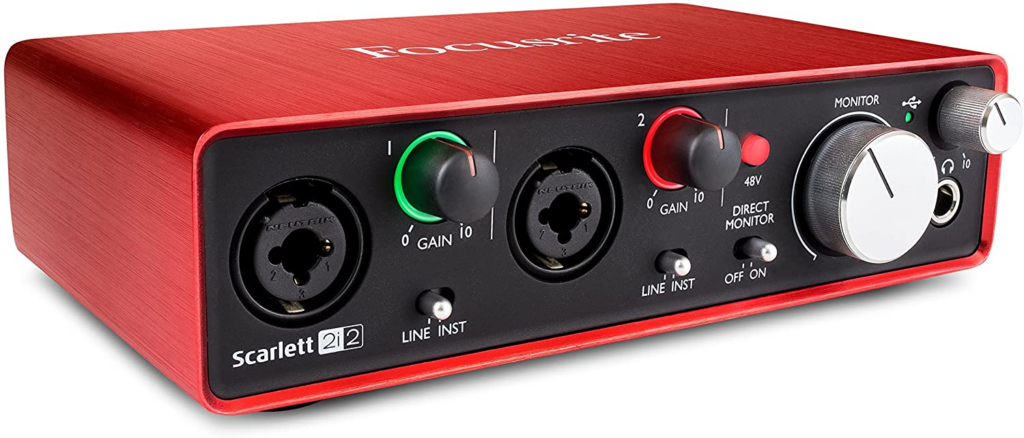
Overview
The Focusrite Scarlett 2i2 audio interface is like a reliable Swiss Army knife for anyone looking to record high-quality audio without needing a PhD in sound engineering. It’s compact, looks sleek with its signature red metal chassis, and is as straightforward as it gets when connecting your microphone to your computer. This little box holds its ground in both home studios and amongst on-the-go podcasters.
Now, let’s dig a bit deeper. I’ve had hands-on experience with the Scarlett 2i2 and can vouch for its ease of use. The preamps are clean—it’s like they gently lift your voice or instrument without adding any harshness or unwanted coloration. It works seamlessly with most recording software, which is fantastic if you’re not quite loyal to any digital audio workstation yet. For beginners or those who value simplicity, this interface takes the cake.
Specs
- 2-in/2-out USB audio interface
- 24-bit/192kHz resolution for crisp audio
- Two Scarlett mic preamps with plenty of gains
- USB-C connection (cable included)
- Direct monitoring capability
Pros:
- The sound quality is excellent for the price point. Vocals come through crisp, and instruments have a nice warmth to them.
- Build quality feels solid, and the design is user-friendly, which is crucial when you’re just dipping your toes into audio recording.
- It’s powered by the USB bus, so there’s no need for an external power supply, which is less clutter on your desk.
- Includes a suite of recording software, which could be a great starting point for newcomers.
Cons:
- It’s got only two inputs, so if you’re planning to record a full band, you’ll need to look elsewhere.
- The USB-C connection is great, but you might need to update your cables if you have an older computer.
Price
When it comes to value, the Scarlett 2i2 punches well above its weight class. You can expect to spend somewhere around $150-$170. It’s a wise investment for your first interface or if you need something dependable when you’re on the move.
In my opinion, the Scarlett 2i2 is a workhorse that won’t disappoint. Its limitations are clear but fair for the asking price. You’re getting a partner in crime for all kinds of audio adventures without the hassle or drain on your wallet. If you’re in it for crystal clear vocals or string-plucking goodness in your personal project studio, this could be the ticket.
Universal Audio Apollo Twin MKII
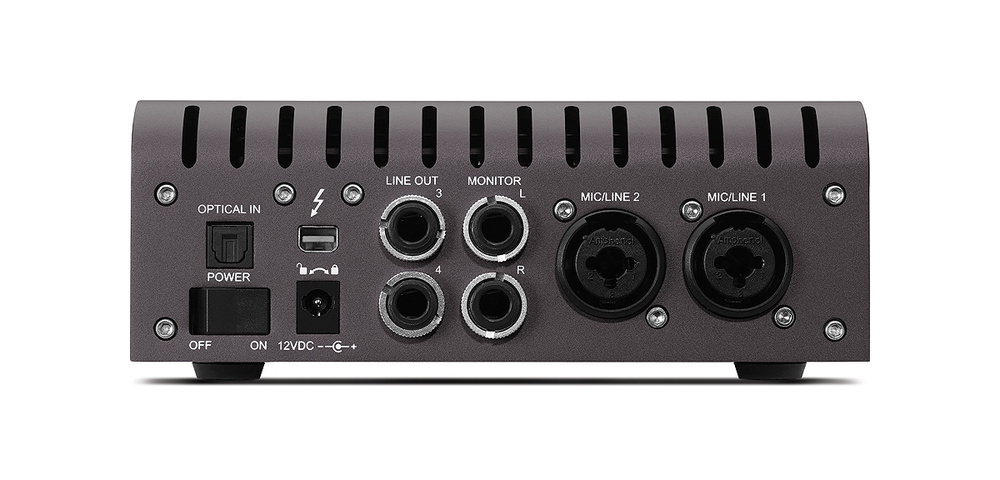
Overview:
The Universal Audio Apollo Twin MKII is a top-tier audio interface that has garnered a reputation for its pristine audio quality and on-board UAD processing. This interface is a darling among producers and musicians who seek professional-grade recordings and a smooth integration with their existing setups. The Apollo Twin MKII is robust, with a sleek design that feels every bit as premium as the audio it produces.
In my experience, the first thing that strikes you about the Apollo Twin MKII is the clarity and warmth it imparts to recordings. Thanks to its high-quality preamps and conversion, your microphone’s true potential is unlocked, with added depth and presence. The built-in UAD-2 processing allows you to use Universal Audio’s acclaimed plugins, which model vintage analog gear with an astonishing degree of accuracy. This means you can record with effects in real-time, without latency, which is a game changer for both tracking and mixing.
The interface is remarkably user-friendly, considering the depth of its functionality. It provides tangible knobs and buttons for preamp gain, monitoring levels, and even offers a talkback function, which streamlines recording sessions. Moreover, its console software is intuitive, providing a digital replication of a classic studio console that’s easy to navigate.
Specs:
- 2 x XLR/TRS combo inputs
- High-quality A/D and D/A conversion
- Realtime UAD-2 SOLO, DUO, or QUAD Core Processing
- Unison technology for modeling classic preamps and recording channels
- Thunderbolt connection for Mac and Windows
- Built-in talkback microphone
Pros:
- Superb preamp quality that imparts clarity and character to your microphone.
- Real-time UAD processing allows for professional effects without latency.
- Unison technology provides authentic emulations of vintage hardware.
- Solid build quality with an intuitive physical interface.
- Excellent software integration with the Console application.
Cons:
- It’s on the pricier side, which might be a barrier for budget-conscious users.
- It requires a Thunderbolt connection, which might limit its compatibility with some systems.
- UAD plugins, while excellent, can be expensive, adding to the overall investment.
Price:
While the price tends to fluctuate based on sales and bundled offers, you can expect to pay a premium for the Universal Audio Apollo Twin MKII. Its cost is reflective of its professional status and the inclusion of the UAD platform. However, for those serious about their audio work and looking for a long-term investment in their recording setup, the price can be justified by the unit’s performance and expandability through plugins. Remember, you are not only buying an audio interface but also stepping into the UAD ecosystem, which is highly regarded in the audio production community.
Certainly! Below is a review format for the PreSonus AudioBox USB 96 audio interface:
PreSonus AudioBox USB 96
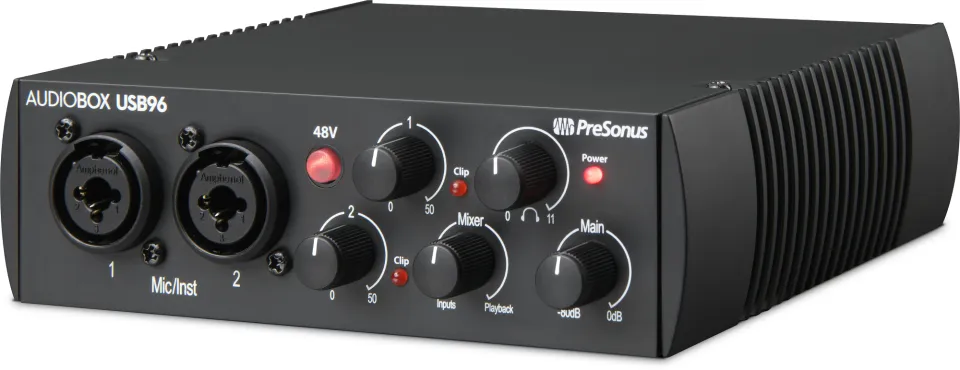
Overview:
The PreSonus AudioBox USB 96 is a compact, user-friendly audio interface that makes recording high-quality audio a breeze. With its straightforward design, it is an excellent choice for podcasters, singer-songwriters, and home studio enthusiasts looking for a reliable interface that won’t break the bank. I appreciate its sturdy construction and the fact that it does not compromise on audio quality, maintaining clear, crisp recording capabilities.
Specs:
- 2×2 USB 2.0 audio interface
- 24-bit resolution and 96kHz sampling rate
- Two combo mic/instrument inputs with Class A preamps
- Zero-latency monitoring via internal mixer
- +48V phantom power for condenser microphones
- MIDI in/out
- Compatible with PC and Mac
Pros & Cons:
Pros:
- The solid build makes it quite durable for travel and regular use.
- It’s simple to set up, appealing to those who may not have extensive tech experience.
- The audio quality produced gives more expensive interfaces a run for their money.
- Can be very portable due to its small size, making it a versatile choice for on-the-go recording.
Cons:
- The preamps are decent, but might lack the depth and warmth provided by higher-end models.
- It might not offer advanced features sought after by seasoned professionals.
- Limited inputs may be a hindrance for larger recording sessions.
Price:
The PreSonus AudioBox USB 96 typically fluctuates around $99, making it a budget-friendly option for those who want quality without the financial stretch.
Personal Opinion:
I find the PreSonus AudioBox USB 96 to be an exceptional starter interface, offering reliability, ease of use, and solid performance for most basic recording tasks. It doesn’t boast the fancy bells and whistles of higher-end interfaces, but it doesn’t pretend to either. What stands out to me is its ability to provide what’s necessary for a clear, professional audio result, particularly appealing to those on a limited budget or just embarking on their audio recording journey. Its no-nonsense approach means less fiddling with settings and more focus on the actual recording process, which can be a major plus for creatives looking to streamline their workflow.
Steinberg UR22C
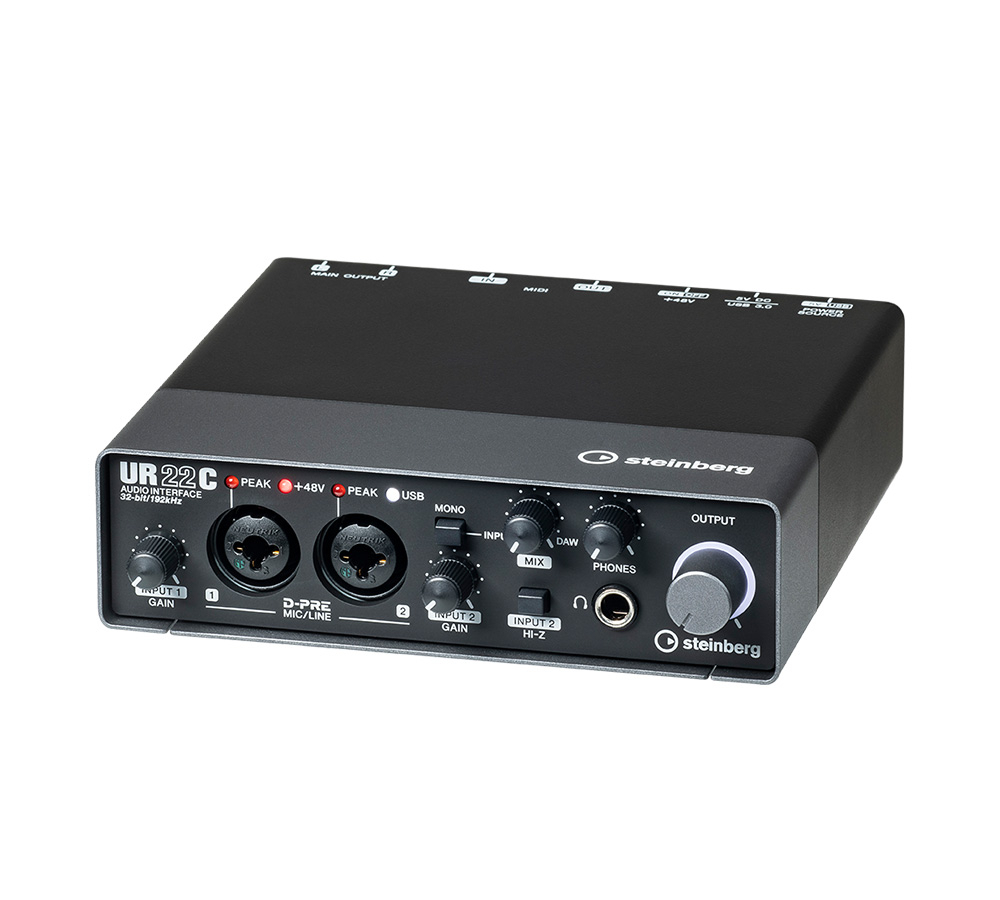
Overview:
The Steinberg UR22C is a compact audio interface that has garnered attention for its quality build and exceptional audio clarity. From my experience, one of the standout features of the UR22C is its impressive support for 32-bit/192 kHz audio, which is a bit like offering a gourmet meal in a world of fast food audio interfaces; it’s a noticeable step up in audio quality. The robust Yamaha D-PRE preamps deliver clean and transparent audio, ensuring that your microphone’s sound is captured in its purest form. This interface is particularly impressive for musicians and producers who require portability without sacrificing audio fidelity. Despite its small size, it feels sturdy and reliable, ready to withstand frequent travel or movement around the studio.
Specs:
- 2 x 2 USB 3.0 audio interface with USB-C
- 32-bit Integer/192 kHz audio resolution
- 2 x Class-A D-PRE Mic Preamps with +48V phantom power
- Latency-free monitoring with DSP effects
- Compatible with iOS devices
- MIDI input/output
- Rugged full-metal housing
- Includes Cubase AI and Cubasis LE
Pros:
- The sound quality is top-notch considering the price bracket, giving you a detailed reproduction that makes it easier to mix and master tracks with precision.
- Low latency performance is another feather in its cap, making recording and monitoring a breeze without any noticeable delay.
- Another major win is its build quality; it gives off a professional vibe and doesn’t feel like it will buckle under pressure.
- Compatibility with iOS devices is a huge plus for mobile producers or those who want to record high-quality audio on the go.
Cons:
- It lacks some of the bells and whistles of higher-end models, such as more input/output options or onboard DSP for running audio plugins.
- It may require adapters or a specific setup to interface seamlessly with USB-A ports or older computer hardware, which could be a con for some users.
- I’ve noticed the included software, while a great value-add, might have a learning curve for beginners.
Price:
At the time of this review, the Steinberg UR22C typically sits in a comfortable mid-range price point. It’s neither overly cheap nor exorbitantly pricey. It offers a nice balance of cost to performance, often being labeled as excellent value for money.
From a personal standpoint, the UR22C stakes its claim well within the crowded audio interface market. For both newcomers looking to start off on the right foot and seasoned pros needing a reliable, portable interface, the UR22C offers genuine quality and an authentic sonic experience. The minor cons do not outweigh the overarching benefits and performance this interface delivers, making it a commendable choice for anyone looking to upgrade their microphone recordings.
Behringer U-Phoria UMC204HD
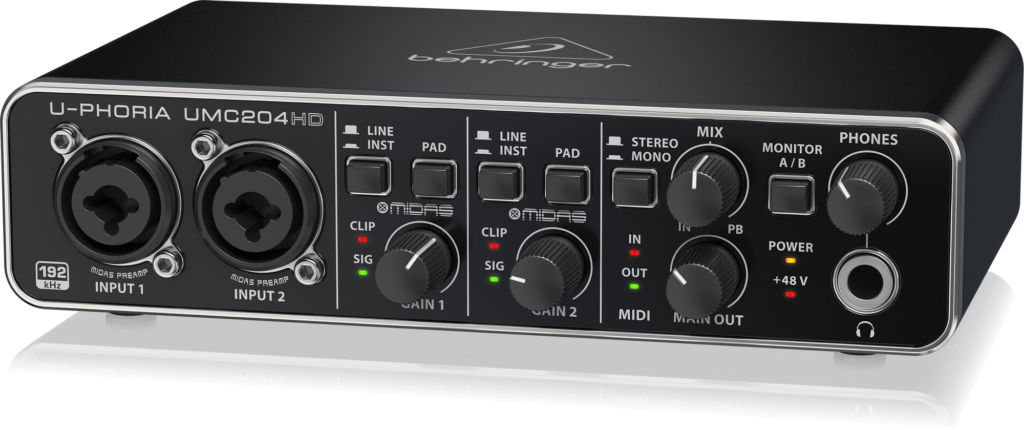
Overview:
The Behringer U-Phoria UMC204HD is a compact and sturdy audio interface that boasts impressive features for its price point. It’s particularly well-suited for home studio enthusiasts or podcasters who need reliable sound quality without the hefty investment. My time with the UMC204HD has shown it to be a workhorse, delivering clear and transparent audio reproduction that brings out the nuances in vocal recordings. The interface is straightforward to use, with intuitive controls that make it accessible even for those just starting out.
Specs:
- 2×4 USB 2.0 Audio/MIDI Interface
- 24-Bit/192 kHz resolution
- 2 MIDAS-designed Mic Preamplifiers with +48V phantom power
- Zero-latency direct monitoring while recording
- Input/Playback Mix control and Stereo/Mono switch for direct monitoring
- 2 combo XLR/TRS inputs and additional 1/4″ inputs
- Main Outputs with “A” and “B” switchable options for monitoring
- MIDI I/O
- USB-powered
- Compatibility with a wide range of recording software
Pros & Cons:
Pros:
- The UMC204HD offers excellent audio quality for its price point. The 24-Bit/192 kHz resolution ensures that recordings are crisp and detailed, which is impressive for an interface in this budget category.
- The MIDAS-designed preamps are a standout feature. They provide clean and transparent amplification for microphones, which is crucial for capturing high-quality audio without noise or coloration.
- Direct monitoring with zero-latency is a key advantage for vocalists and instrumentalists, allowing them to hear themselves in real-time without any distracting delay.
- The build quality is robust for a budget interface, with a solid metal chassis that feels durable and well-suited for mobile recording setups or home studios.
- The inclusion of MIDI I/O is a welcome addition that isn’t always found on interfaces at this price, making it a versatile choice for producers who use MIDI instruments and controllers.
Cons:
- While the UMC204HD is compatible with most recording software, some users have reported driver issues, particularly on Windows systems, which can lead to frustration and require additional troubleshooting.
- The UMC204HD’s preamps, although clear, might lack the character or warmth that some users might be looking for, which can be more prominent in higher-end interfaces.
- The unit is USB-powered, which is convenient but can sometimes result in less headroom for the preamps compared to interfaces with external power supplies.
- The “A” and “B” switchable monitor outputs are useful, but some users might prefer dedicated volume controls for each output for more precise monitoring setups.
Price:
- The Behringer U-Phoria UMC204HD is typically priced around $100-$150, though prices can vary based on region and retailer.
In my opinion, the Behringer U-Phoria UMC204HD is a fantastic budget-friendly audio interface that doesn’t skimp on quality. The sound clarity, thanks to the high-resolution converters and MIDAS preamps, is a major selling point for anyone looking to do serious recording without breaking the bank. It’s also very user-friendly, making it a great choice for beginners or those who want a simple, no-fuss setup.
However, the potential driver issues can be a drawback. It’s important to consider the compatibility with your operating system and be prepared to possibly navigate some technical hurdles to get it running smoothly.
The lack of coloration in the preamps is a double-edged sword; it’s great for capturing an uncolored sound but may not satisfy those looking for a more distinct sonic character that some other preamps offer. That said, it’s nothing that can’t be addressed with some post-processing.
For the price, the UMC204HD is a steal. It’s a reliable workhorse that can handle a variety of recording tasks, and the MIDI I/O makes it an even more versatile tool for a home studio setup. If you’re on a tight budget but don’t want to compromise too much on quality, this is a strong contender to consider.
Conclusion:
Whether you’re a budding podcaster, an aspiring musician, or simply looking to elevate your audio recording quality, choosing the right audio interface is crucial. While our listicle review has spotlighted the top contenders tailored to a range of needs and budgets, your perfect match hinges on specific features, connectivity, and the ease of use necessary for your projects. Remember to consider factors such as preamp quality, latency, and compatibility with your existing gear. Invest wisely and enjoy the crystal-clear sound quality that brings your audio endeavors to life with professional-grade finesse.
Looking to upgrade your audio recording setup even further? To complement your audio interface and expand your recording versatility, consider adding a wireless lavalier microphone – ideal for clear, high-quality vocal capture without cables holding you back.
FAQs:
Q1: What’s an audio interface, and why do I need one?
A1: An audio interface is a device that allows you to connect microphones and instruments to your computer, converting analog signals into digital audio for recording and playback. It is essential for high-quality recordings and provides more options and better audio quality than built-in audio inputs.
Q2: Can I use an audio interface with any type of microphone?
A2: Most audio interfaces are versatile, but it’s important to check if the interface has the correct inputs and phantom power (if required) for your specific type of microphone, such as dynamic or condenser mics.
Q3: How important is the preamp quality in an audio interface?
A3: Preamp quality is vital as it amplifies your microphone’s signal while keeping the noise low. A good preamp ensures a clearer and more detailed recording, which is especially important for professional or studio-grade work.

































.png)


